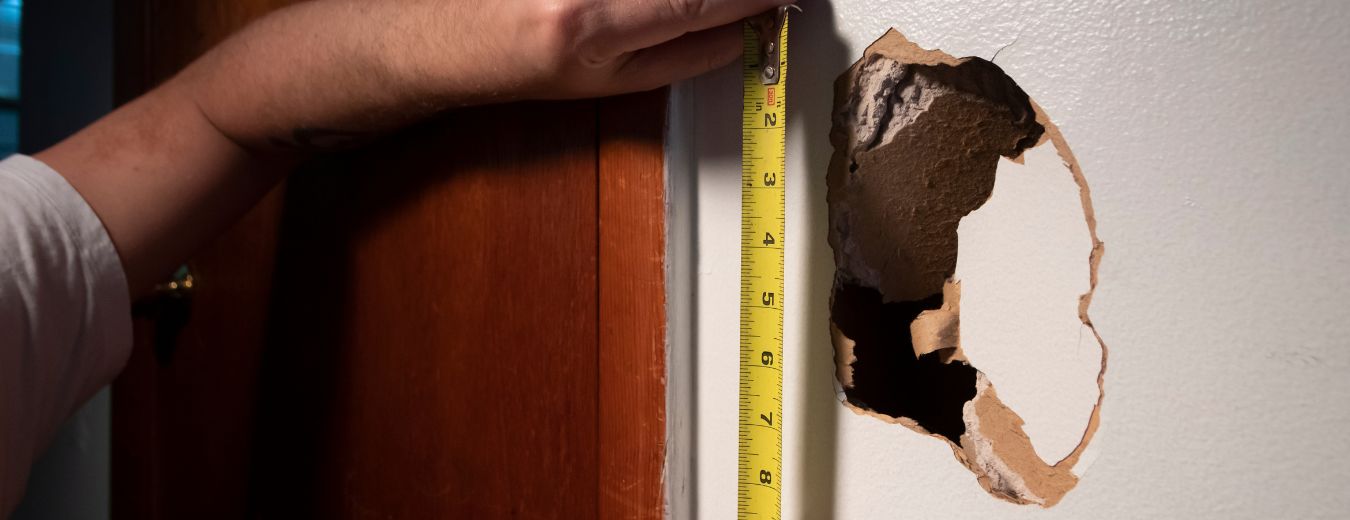
What You Need to Know About Drywall Repair
Posted on May 31, 2022
It has happened to all of us at one time or another during our lives. One minute it is all fun and games. Everyone is happy and playing at home like it is any other day. No one expects it to happen to them.
Then it does.
Somebody threw something at somebody else. Or someone shoved another person. Usually, it involves two individuals and a ball. Or some horseplay may be involved. “I didn’t do it,” is most times the accused culprit, but no one has ever seen this elusive character in real life.
But it doesn’t really matter how it happens, because eventually, we all end up with holes, or some kind of other damage, in our walls.
So how do you find closure & repair when your home becomes the victim of a drywall disaster?
What is Drywall?
Drywall (also called plasterboard, wallboard, sheetrock, gypsum board, buster board, custard board, and gypsum panel) is a panel made of calcium sulfate dihydrate or gypsum & additives. It is typically layered between thick sheets of facer and backer paper.
The ingredients are mixed with fiber (typically paper, glass wool, or a combination of these materials); plasticizer, foaming agent; and additives that can reduce mildew, flammability, and water absorption.
Drywall is typically used in the construction of residential & commercial interior walls and ceilings.
In the middle of the 20th century, drywall construction became prevalent in North America as a time- and labor-saving alternative to lath and plaster walls.
Today, you’ll find drywall in most modern homes and buildings. Drywall provides a cheap and fire-resistant option for shelter and insulation.
However, while drywall has its advantages, it doesn’t take much to damage it. One good shove and drywall will give and crack easily.
Repairing Drywall
Professionals, like CertaPro Painters, can fix, even big drywall damage, in a snap. But if you have smaller holes or gashes, home improvement stores sell DIY repair kits to fix them yourself.
But when your drywall takes a hit, you might wonder which course of action to take next.
Should you try to fix it yourself?
Or should you call in the pros, like CertaPro?
And should you have it patched, repaired, or replaced?
Here are some drywall repair examples to help you determine what to do next.
When to Patch Drywall
This is the most common option, usually. Most drywall damage involves minor indentations, abrasions, scrapes, and holes. These small errors don’t require anything more than a small fix (like the ones mentioned above).
For tiny holes or scrapes, all that’s needed is some spackle and a smoothing tool. With a little interior painting over the area, your wall will look as good as new.
Even holes the size of doorknobs only need a patch. Those DIY drywall patch kits have all the tools you’ll need. First, the patch goes over the hole. Then, the joint compound is spread over the patched area and smoothed around the edges to blend with the wall, then left to dry.
Once again, you or a painting service can then repaint the area or the entire wall to complete the job.
When to Repair Drywall
Sometimes the damage to your drywall is more severe, but not so bad that it needs replacement. Larger holes (six inches or larger) will require a repair job. Fortunately, these repairs aren’t as complicated as they might seem.
The main idea of a drywall repair is to replace the damaged area with a new piece of drywall. The easiest way to go about this is to cut a piece of drywall big enough to cover the damaged area, plus some extra space around it.
Then, you have to trace the new section around the damaged drywall so you know how much to cut out of the existing wall. This will create a perfect fit for the new piece of drywall. Using joint tape, joint compound, and a new coat of paint, this new piece will blend right in.
Depending on the size of the hole, the new piece of drywall might need additional backing support via two wooden furring strips.
Aside from this additional step, the rest of the repair process is the same.
When to Replace Drywall
You might wonder, then, when is it time to replace the drywall entirely? If the physical damage is large and severe enough, it might not be worth it (or possible) to simply repair the drywall.
However, more often than not, the main reason to replace drywall has to do with other forms of damage, namely moisture.
Plumbing issues or poor insulation can allow moisture to gather on drywall. Over time, this moisture can become a bed for mold and bacteria, slowly rotting away the material. Eventually, this mold can weaken the drywall to a dangerous degree.
Plus, it will look unsightly. If this goes on for too long, you’ll have to replace the drywall for safety reasons. Sure, residential painting can temporarily cover up mold spots, but it won’t do anything to fix the problem.
Most cases of drywall damage simply require a minor patch job. Still, be on the lookout for water damage, as this can turn into a hazardous and costly problem.
Do you need your drywall patched, repaired, replaced, and/or painted? Give CertaPro Painters of Pittsburgh South Hills a call at 724-941-5762 or schedule a free estimate online today!





